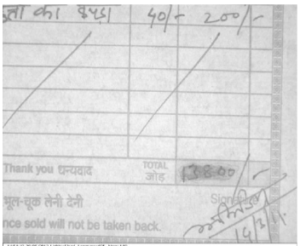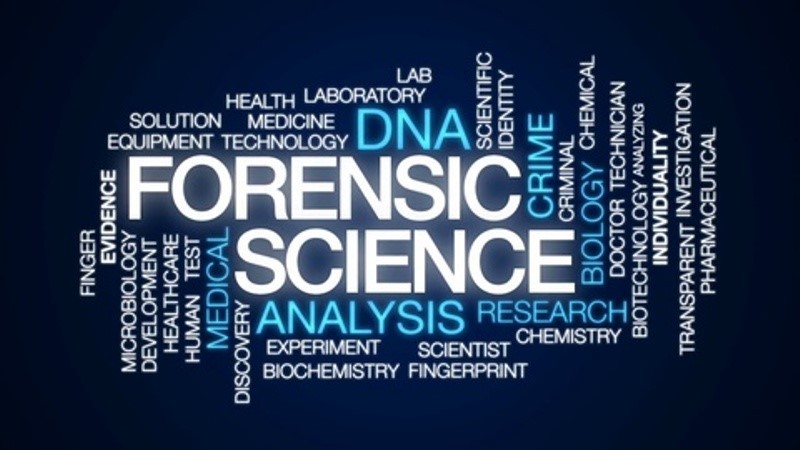Forgeries in documents, Question document embraces various appellations such as forensic document examination, document examination, handwriting examination also sometimes referred to as handwriting analysis.
The growth of science leads to growth in this field. Skilled students begin focusing upon this field and manifolded appurtenance devices and apparatuses.
An expert witness role is being placed who is scientifically, emphatically, and just not empirically.
Each era has its crimes, due to crimes happening in various era’s it creates a sense of understanding within the society for the drastic need of science in the field of question documents. The question documents deal with the scientific way of thinking, it is the inter-relation between the observed and the factual phenomenon, the discovery of certain universal patterns is ascertained.
The article focuses on the various types of forgeries encountered in questioned documents, also some ways to resolve them. Scientific methods have been aimed to construct a hypothesis based on the observations and measurements Science is greater than philosophy, aiming for a purpose, the main purpose of the science discoveries aids to help to mankind and has been a hallmark of 19th and 20th centuries.
Forgeries and Its Detection
An average unaided eye can distinguish only a small amount of difference, fineness of a particular line can be seen only about 200 to 250 to the inch, lines smaller than this seem to be a solid mass or tint.
The microscope is the instrument used to see physical evidence directly by no means it is impossible to see physical evidence through naked eyes. Hence the variety of questions a microscope can answer. In many instances, the evidence is conclusive. The microscope serves to discover the hidden facts within it.
Forgery – Forgery means making a false document that intent on the part of is the maker to defraud. The problem of identification is inseparable related to the problem of forgery, the necessity for a scientific identification of writing or signatures arises from the fact that forged documents are usually presented as genuine and genuine as vice versa, sometimes being mentioned as forged.
Usually, signatures are being forged for the signature that authenticates a document and which is relatively largely easy to being forged only by the signature rather than forging the whole document.
Types of Forgeries
For the purpose of identification and comparison of signatures and writings, forgeries are classified under: –
- Simulated/Copied forgery/Forgery by Memory
- Traced forgery
- Freehand forgery (forgery without model/impersonation)
- Transplanting revenue stamps bearing a genuine signature
- Erasures and Alteration in Documents.
Simulated Forgery – It’s a simulation or imitation of genuine writing. The method of this class of forgery production is the same as employed by pupils in following a copy. The type of writing understanding strictly depends on the skill of the examiner to classify it according to its class of forgery.

Fig.1 (a) Genuine Signature (b) Simulated Signature
Source CITATION Mig05 l 16393 (Miguel A. Ferrer, 2005)
The crime is necessarily done with secrecy, grouped with the collaboration of time, circumstances and place. The history of crimes clearly mentions that in most of the case the culprit is a beginner who has no experience, with no special preparations for a task without realizing its difficulty.
Traced Forgery -The Trace Forgery Name Signifies the result of an attempt to transfer to a fraudulent document an exact facsimile of genuine writing by some tracing process.
Traced forgeries are the result of hesitation shown, an abnormal change in the direction, the inconsistency of pen pressure, and unnatural movement interruptions in a more pronounced manner than simulation, but this again depends upon the scientific process of tracing employed and skill of the operator.

Fig.2 Samples showing traced forgery.
Source- CITATION Kop07 l 16393 (Koppenhaver, 2007)
Usually, the culprit’s main effort focuses to make the forged signature similar to the genuine one for which he considers the method of tracing among the best technique compared to other techniques of forgery.
Freehand Forgery – Forgery without the need for a model or simply can be said as a forgery by impersonation. When a person just uses the signature in a normal manner or in a modified manner, representing himself to be of that person with an ultimate motive, such a signature is a forgery.

Fig.3 Displaying freehand forgery comparison with other types of forgeries. Signatures.
Source CITATION Jer09 l 16393 (Lavay, 1909)
In this type of forgery, no attempt is being made the model signature is not being used for the forgery it’s just signed by freehand once the genuine signature of an actual person is available, the forgery is obvious and to prove the same is not as much difficult in such cases.
Transplanting revenue stamps bearing genuine signature – Genuine signature is utilized by transplantation of revenue stamps containing the original signature, which is genuine.
The stamp which has the genuine signature is being removed from any other document and is affixed to the desired document
Erasures and Alteration in Documents– Fraudulent changes are made in such a way of avoiding detection and may not be discovered for a long time if attention is not to be given.
Will notes and other important documents have the probability of maximum alterations?
The most common and is the clumsiest type of erasure considered is abrasion, by which method the paper is being removed containing the ink upon it.

Fig.4 Obliterated figures visible under floodlight.
Source CITATION Ram18 l 16393 (Ramesh Kumar Pandey, 2018)
References
- Koppenhaver, K. M. (2007). Forensic Document Examination: Principles and Practice. Humana Press.
- Lavay, J. B. (1909). DISPUTED HANDWRITING. AMERICAN BANKERS’ ASSOCIATION.
- Miguel A. Ferrer, J. B. (2005). Offline geometric parameters for automatic signature verification using fixed-point arithmetic. IEEE Transactions on Pattern Analysis and Machine Intelligence.
- Osborn, A. S. (1929). Questioned documents. London: Boyd printing company.
- Ramesh Kumar Pandey, M. S. (2018). Forensic Investigation of Suspected Document for Alteration, Erasures & Obliteration. Galore International Journal of Applied Sciences and Humanities.
Author: Ishan Tiwari
 Ishan Tiwari is a graduate from Amity Institute of Forensic Science in Forensic Science, a keen and passionate learner. He has also completed training from eminent organizations such as Central Forensic Science Laboratory Chandigarh & Regional Forensic Science Laboratory Kota. Ishan is also a Certified Information Security Management System Trainer from BSI, also actively publishing research papers and presentations at various conferences.
Ishan Tiwari is a graduate from Amity Institute of Forensic Science in Forensic Science, a keen and passionate learner. He has also completed training from eminent organizations such as Central Forensic Science Laboratory Chandigarh & Regional Forensic Science Laboratory Kota. Ishan is also a Certified Information Security Management System Trainer from BSI, also actively publishing research papers and presentations at various conferences.
Disclaimer: This article has been published in Forensic Science Application, NVAFRCI, 1(14):2020




Pingback: Forensic Science In Criminal Investigation - Nyayik Vigyan
Pingback: Decipherment of Secret Writing - Nyayik Vigyan